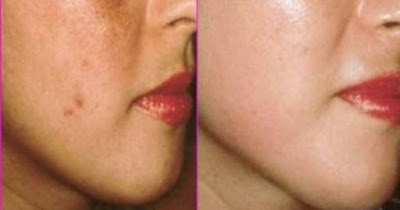Numerous people are constantly being subjected to mold toxins, and are not even aware of it, as a mold is a silent killer. It can grow under the floor, in the corners of your walls, behind them or even in the food you consume.
The exposure to mold can have serious health consequences, and lead to numerous diseases. We can consume these toxins through swallowing, breathing or touch.
You should never underestimate the capacity of mold as it can have even deadly consequences. At times, even doctors cannot specify the reason for a health issue, and it lies in the exposure to mold.
Some mold types release invisible poisonous chemicals called mycotoxins, which are difficult, but not impossible, to be eliminated. Mycotoxins pollute your living space, and even the furniture in your home and office, as well as your clothes.
As soon as they enter your body, these dangerous toxins cause significant damage to your joints, nervous and immune system, and may impede your emotions, thinking and even the length of your life.
Apart of the mycotoxins, mold can also generate allergens and irritants which lead to irritability, which may vary due to the sensitivity of the affected person.
One study suggests that 25 to 28% of people in the US are genetically predisposed to have moisture issues.
However, the symptoms of the mold intoxication are similar to the ones of numerous other diseases like fibromyalgia, as chronic fatigue syndrome, celiac disease, Lyme disease, and due to this, it is often difficult to be diagnosed.
These are the most common symptoms of mold intoxication:
food sensitivity
joint pain
mood swings
weight fluctuation
blurred vision
mood swings
fatigue
autoimmune diseases
headaches
numbness and tingling
cognitive problems
inflammatory problems, especially lung issues
sleep disorders
sensitivity to light
Moreover, in the case of a weakened immune system for a longer period of time, mold can lead to significant problems with your eyes, skin, and lungs.
Yet, almost 50% of the buildings in the US have water damage, meaning that they are a perfect place for the development of mold. Rooms with poor ventilation and water pipes are great for the creation of mold. Hence, it is extremely important to change the old pipes in your house or apartment.
Yet, the mold is not created on wet areas only. It can appear in all places where water passes through, in air conditioners, behind the paneling, or under your carpet.
On the other hand, we all know that mold multiplies in damp and dark areas, but this is not always this case, as some mold types may even live and reproduce in a dry climate. Mold can also be found in our food, where it cannot be seen, in the coffee, chocolate, wine, nuts and grains.
Prevention
It is extremely important to always check the date of the food you buy. Moreover, always make sure that your rooms are well ventilated. You can also use the services of companies that measure the moisture or potential mold in the rooms, and act according to their advice in order to protect yourself and your family.
Source: www.finelivingadvice.com
The exposure to mold can have serious health consequences, and lead to numerous diseases. We can consume these toxins through swallowing, breathing or touch.
You should never underestimate the capacity of mold as it can have even deadly consequences. At times, even doctors cannot specify the reason for a health issue, and it lies in the exposure to mold.
Some mold types release invisible poisonous chemicals called mycotoxins, which are difficult, but not impossible, to be eliminated. Mycotoxins pollute your living space, and even the furniture in your home and office, as well as your clothes.
As soon as they enter your body, these dangerous toxins cause significant damage to your joints, nervous and immune system, and may impede your emotions, thinking and even the length of your life.
Apart of the mycotoxins, mold can also generate allergens and irritants which lead to irritability, which may vary due to the sensitivity of the affected person.
One study suggests that 25 to 28% of people in the US are genetically predisposed to have moisture issues.
However, the symptoms of the mold intoxication are similar to the ones of numerous other diseases like fibromyalgia, as chronic fatigue syndrome, celiac disease, Lyme disease, and due to this, it is often difficult to be diagnosed.
These are the most common symptoms of mold intoxication:
food sensitivity
joint pain
mood swings
weight fluctuation
blurred vision
mood swings
fatigue
autoimmune diseases
headaches
numbness and tingling
cognitive problems
inflammatory problems, especially lung issues
sleep disorders
sensitivity to light
Moreover, in the case of a weakened immune system for a longer period of time, mold can lead to significant problems with your eyes, skin, and lungs.
Yet, almost 50% of the buildings in the US have water damage, meaning that they are a perfect place for the development of mold. Rooms with poor ventilation and water pipes are great for the creation of mold. Hence, it is extremely important to change the old pipes in your house or apartment.
Yet, the mold is not created on wet areas only. It can appear in all places where water passes through, in air conditioners, behind the paneling, or under your carpet.
On the other hand, we all know that mold multiplies in damp and dark areas, but this is not always this case, as some mold types may even live and reproduce in a dry climate. Mold can also be found in our food, where it cannot be seen, in the coffee, chocolate, wine, nuts and grains.
Prevention
It is extremely important to always check the date of the food you buy. Moreover, always make sure that your rooms are well ventilated. You can also use the services of companies that measure the moisture or potential mold in the rooms, and act according to their advice in order to protect yourself and your family.
Source: www.finelivingadvice.com




















